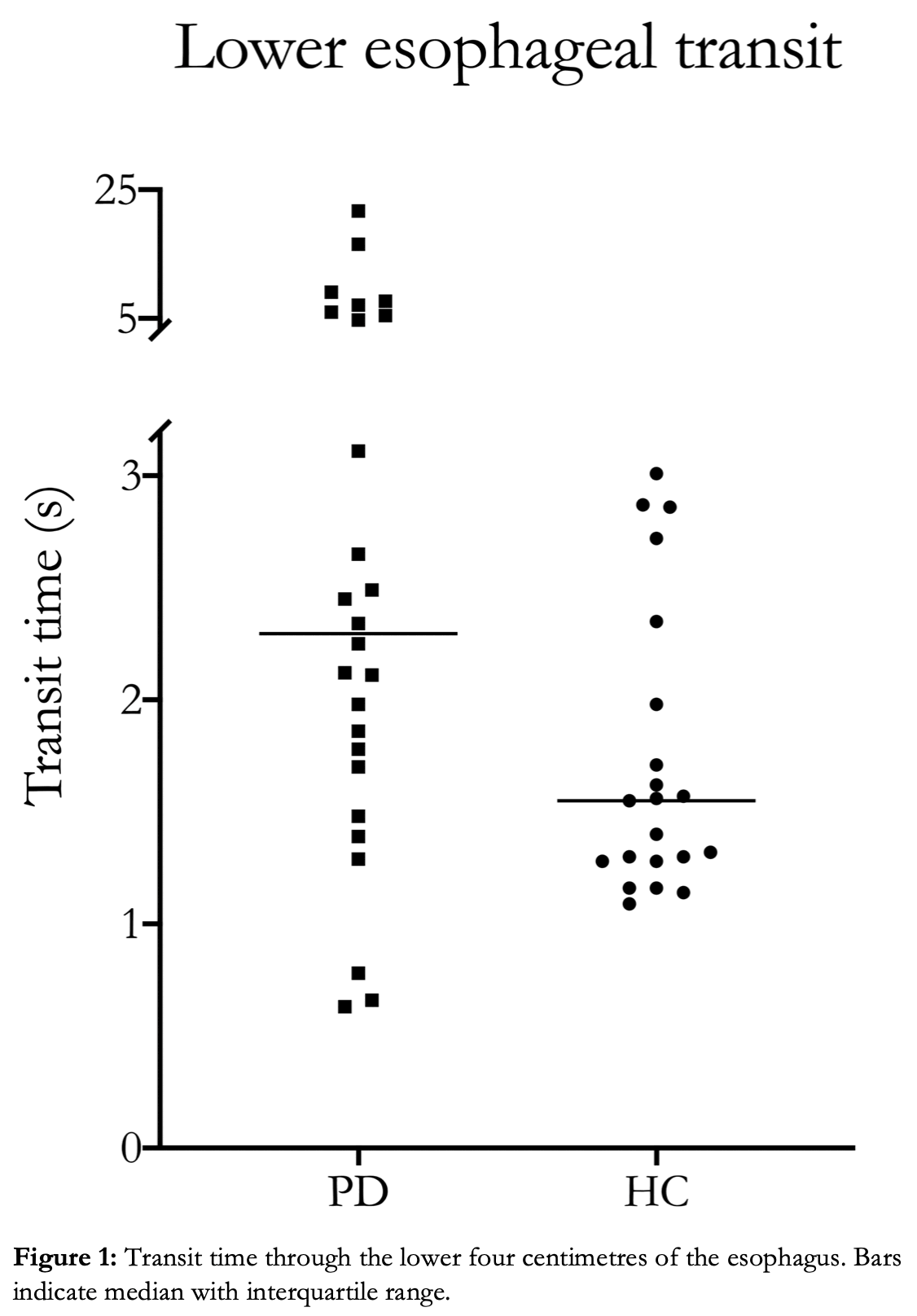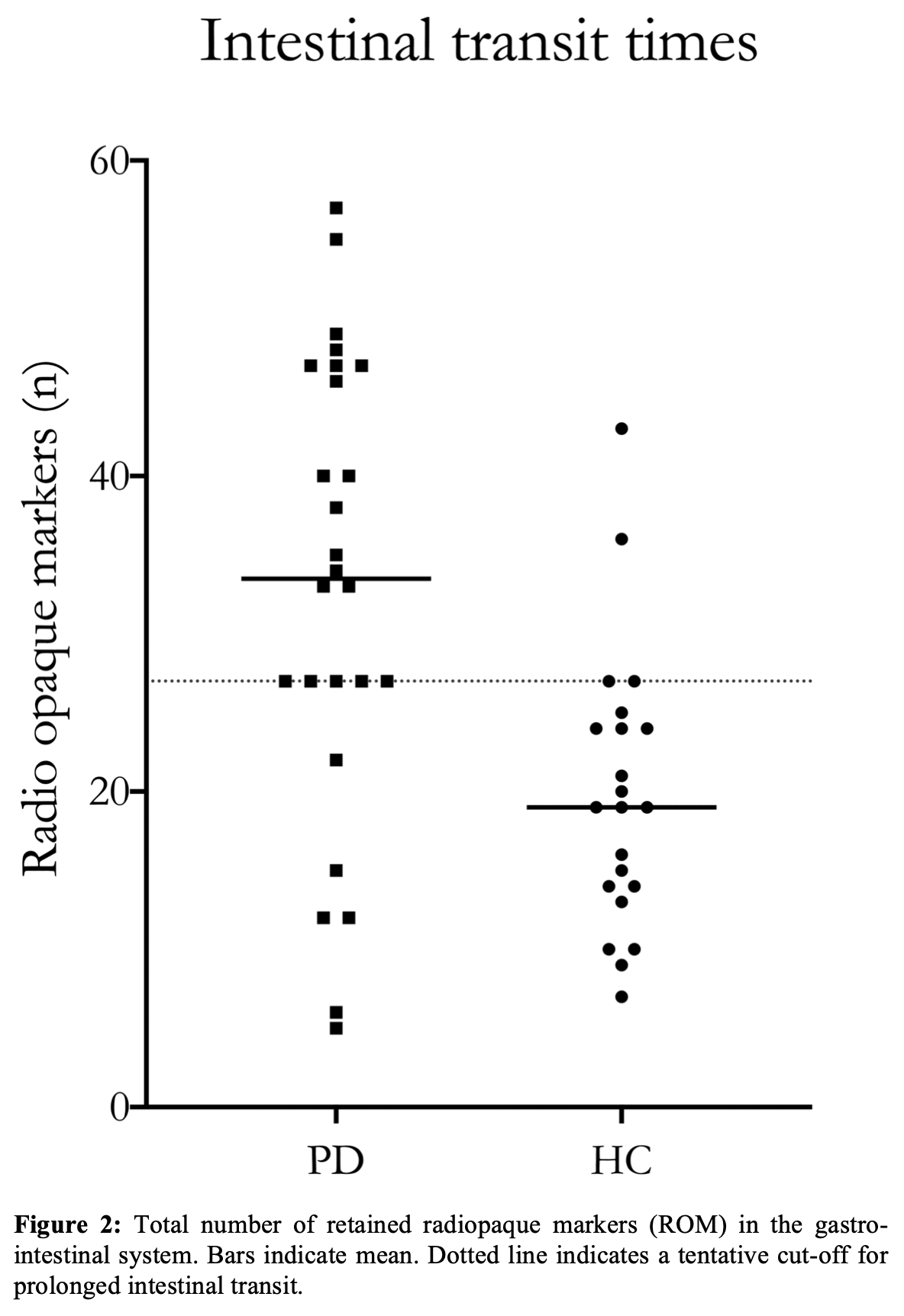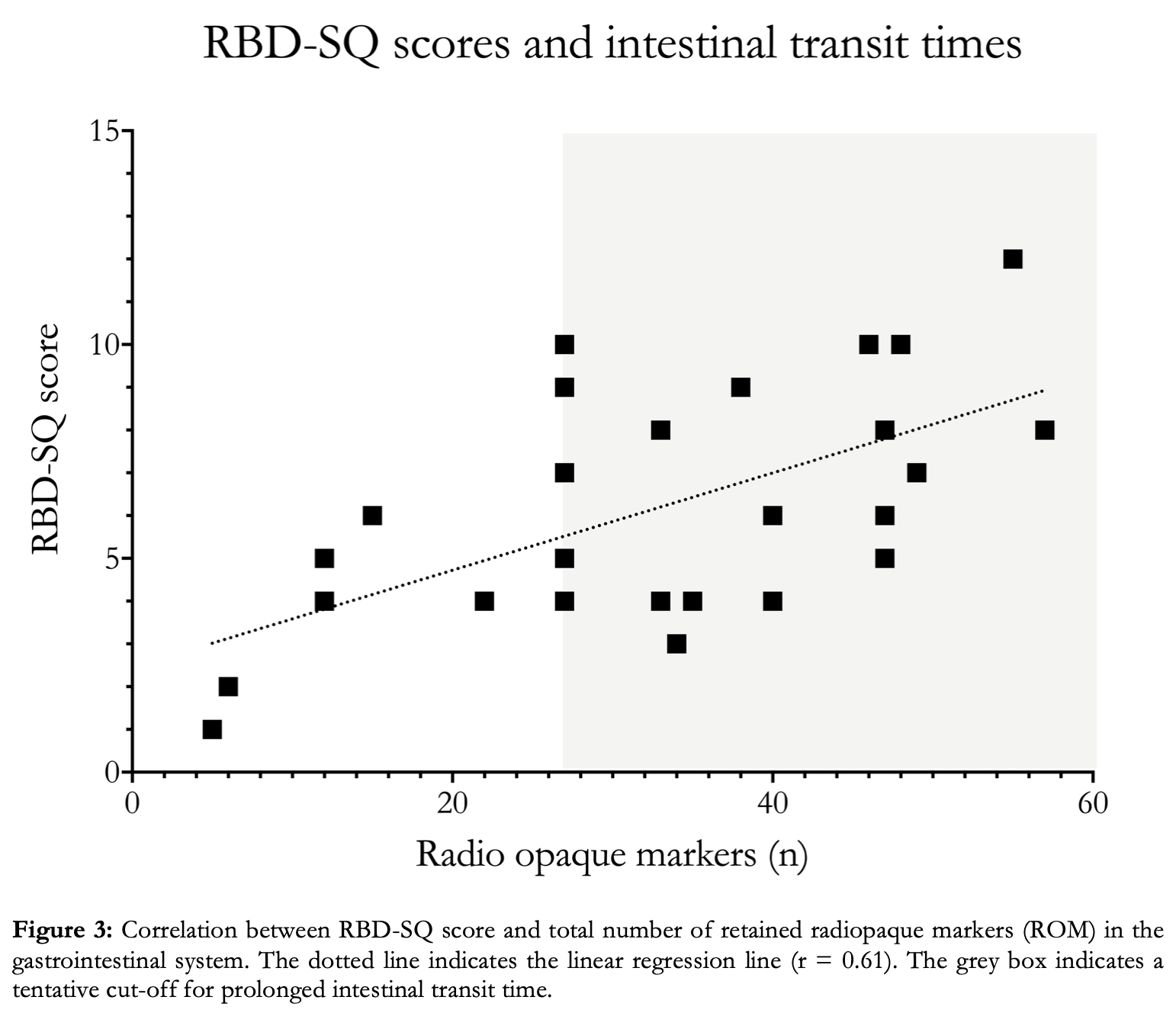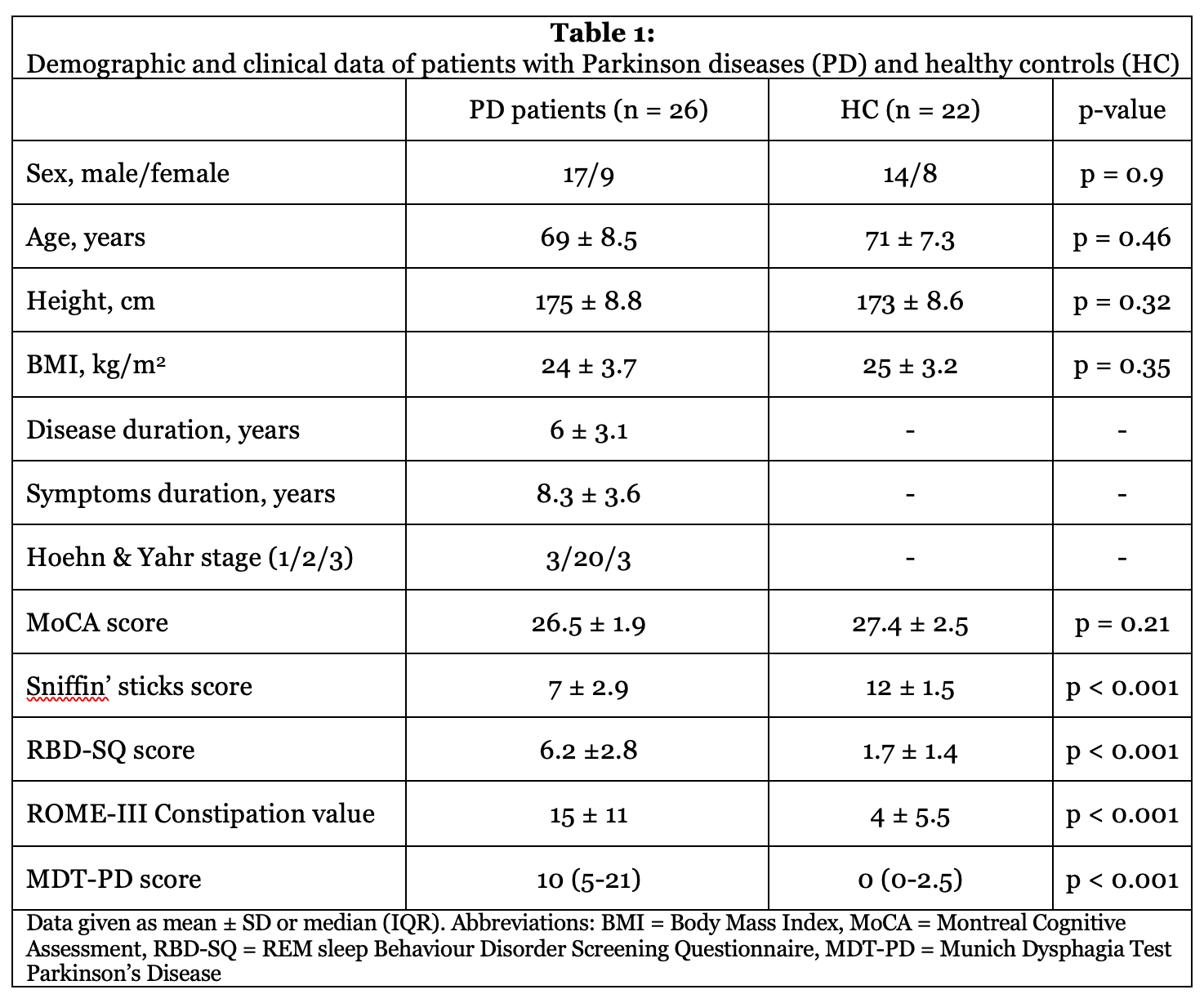Category: Parkinson's Disease: Non-Motor Symptoms
Objective: To investigate esophageal and intestinal transit times in early-moderate Parkinson’s disease (PD) and to study correlations with probable RBD and subjective symptoms.
Background: Intraneuronal Lewy inclusions are the characteristic pathology in PD and has been detected throughout the CNS, but also in the lower esophagus and colon. It has been hypothesized that the Lewy pathology originates in the enteric nervous system with secondary spreading to the brain. Findings in a recent multi-modality imaging study suggested that patients with isolated REM-sleep behaviour disorder (RBD) showed full-blown pathology to the autonomic nervous system years in advance of dopaminergic deficit[1]. This finding suggests that RBD is a phenotypic hallmark of a gut-first subtype of PD.
Method: 26 early-moderate PD patients and 22 healthy controls (HC) were included in this cross-sectional study [TABLE 1]. Colonic transit times and volumes were determined by CT after radio opaque marker ingestion. Esophageal scintigraphy (5-7.5 MBq swallows of 99m-Tc) was performed using a gamma-camera (8 frames per second) to detect upper and lower esophageal dysmotility. Olfaction tests, RBD-Screening Questionnaire (RBD-SQ) and other questionnaires were administered.
Results: Here, we present preliminary results from 26 PD patients and 22 HC. Comparing PD patients and HC, significant between-group differences were detected in the median esophageal transit time [FIGURE 1] (median 2.3 s [IQR: 1.6-5.6] vs. 1.5 s [IQR 1.3-2.1], p<0.01) and mean intestinal transit time [FIGURE 2] (mean 33 [SD=15] vs. 20 [SD=8.8] , p<0.001). RBD-SQ scores showed a moderate-to-strong correlation with intestinal transit times [FIGURE 3] (p<0.01) but not with lower esophageal transit times (p>0.5). Final results including colonic volume and upper esophageal transit will be presented at the MDS 2020 Congress
Conclusion: This study provides additional evidence that RBD in early-moderate PD is associated with marked intestinal dysfunction supporting that RBD may be a marker of a peripheral phenotype of PD. Dysmotility in the lower esophagus (mostly asymptomatic) was detected in a substantial fraction of the PD patients, but, surprisingly, it did not correlate with either colonic transit times or RBD-SQ scores.
References: [1] Knudsen, K., Fedorova, T. D., Hansen, A. K., Sommerauer, M., Otto, M., Svendsen, K. B., . . . Borghammer, P. (2018). In-vivo staging of pathology in REM sleep behaviour disorder: a multimodality imaging case-control study. The Lancet Neurology. doi:10.1016/S1474-4422(18)30162-5
To cite this abstract in AMA style:
C. Skjærbæk, K. Knudsen, P. Borghammer. Intestinal transit in early-moderate Parkinson’s disease correlates with probable RBD – subclinical esophageal dysmotility does not correlate [abstract]. Mov Disord. 2020; 35 (suppl 1). https://www.mdsabstracts.org/abstract/intestinal-transit-in-early-moderate-parkinsons-disease-correlates-with-probable-rbd-subclinical-esophageal-dysmotility-does-not-correlate/. Accessed December 23, 2025.« Back to MDS Virtual Congress 2020
MDS Abstracts - https://www.mdsabstracts.org/abstract/intestinal-transit-in-early-moderate-parkinsons-disease-correlates-with-probable-rbd-subclinical-esophageal-dysmotility-does-not-correlate/




